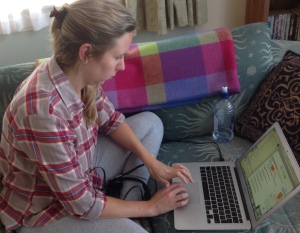
The irrepressible Jessica Mitford – image from ‘Irrepressible: The Life and Times of Jessica Mitford’, by Leslie Brody
If you want to write well you must be prepared to murder your darlings – that is, kill off all those unnecessary words and little flourishes.
Whenever you execute a particularly fine piece of writing be sure to delete it before pressing ‘send’. This applies equally to business writing and first novels.
Jessica Mitford, one of the famous Mitford sisters, popularised the phrase in her controversial book The Making of a Muckraker, which included tips on how to write if you want to be listened to.
The red sheep of the family, she was a younger sister of novelist Nancy Mitford, of The Pursuit of Love and Love in a Cold Climate fame, and Diana Mitford, who married British wartime Fascist leader Oswald Mosley. Perhaps it’s not surprising she became a life-long Communist.
This blog is dedicated to Jessica and her unfine writing – writing that is robust and honest, and delivers its message clearly.
I would be less than honest if I didn’t mention that Jessica didn’t actually invent the phrase “murder your darlings”. It was coined by British journalist, critic and novelist Arthur Quiller-Couch who did. He said that “whenever you feel an impulse to perpetrate a piece of exceptionally fine writing, obey it – wholeheartedly – and delete it before sending your manuscript to press. Murder your darlings.”
He also opposed the use of jargon – another killer of good writing. But he thought the kind of slang words that have become everyday usage were perfectly fine.
However, all this doesn’t mean writing needs to be rough, or that it shouldn’t be properly thought out. As a writer, you need to think carefully about what you want to say but not labour too much over style. The result will have a spare elegance about it, like a Little Black dress or one of Apple’s beautifully minimal products.
So, when you regretfully draw a red line through all those fine flourishes you are really paring back to the beautiful bare bones of your writing.
This is when you really start to communicate with your reader.
